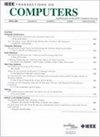SCARF:利用稳健框架确保芯片安全,防范制造时硬件木马
IF 3.8
2区 计算机科学
Q2 COMPUTER SCIENCE, HARDWARE & ARCHITECTURE
引用次数: 0
摘要
半导体行业的全球化给集成电路(IC)带来了安全挑战,特别是与硬件木马(HT)威胁有关的挑战,即在集成电路制造过程中可能引入的恶意逻辑。虽然人们在验证集成电路的正确性和可靠性方面做出了巨大努力,但其安全性却常常被忽视。在本文中,我们提出了一个综合框架,该框架集成了一整套方法,适用于设计的前端和后端阶段,旨在提高集成电路的安全性。首先,我们概述了一种系统方法,通过重新利用验证断言,将现有验证资产转化为有效的安全检查器。为了进一步提高安全性,我们介绍了一种在物理综合过程中集成在线监控器的创新方法--后端插入提供了额外的防御层。实验结果表明,通过我们引入的指标--安全覆盖率(SC)--来衡量,安全性有了显著提高,而面积和功耗仅略有增加,通常低于 20%。在物理合成过程中插入在线监控器可将安全性指标提高 33.5%。这一整体框架为整个集成电路设计提供了全面的防御机制。本文章由计算机程序翻译,如有差异,请以英文原文为准。
SCARF: Securing Chips With a Robust Framework Against Fabrication-Time Hardware Trojans
The globalization of the semiconductor industry has introduced security challenges to Integrated Circuits (ICs), particularly those related to the threat of Hardware Trojans (HTs) – malicious logic that can be introduced during IC fabrication. While significant efforts are directed towards verifying the correctness and reliability of ICs, their security is often overlooked. In this paper, we propose a comprehensive framework that integrates a suite of methodologies for both front-end and back-end stages of design, aimed at enhancing the security of ICs. Initially, we outline a systematic methodology to transform existing verification assets into potent security checkers by repurposing verification assertions. To further improve security, we introduce an innovative methodology for integrating online monitors during physical synthesis – a back-end insertion providing an additional layer of defense. Experimental results demonstrate a significant increase in security, measured by our introduced metric, Security Coverage (SC), with a marginal rise in area and power consumption, typically under 20%. The insertion of online monitors during physical synthesis enhances security metrics by up to 33.5%. This holistic framework offers a comprehensive defense mechanism across the entire spectrum of IC design.
求助全文
通过发布文献求助,成功后即可免费获取论文全文。
去求助
来源期刊

IEEE Transactions on Computers
工程技术-工程:电子与电气
CiteScore
6.60
自引率
5.40%
发文量
199
审稿时长
6.0 months
期刊介绍:
The IEEE Transactions on Computers is a monthly publication with a wide distribution to researchers, developers, technical managers, and educators in the computer field. It publishes papers on research in areas of current interest to the readers. These areas include, but are not limited to, the following: a) computer organizations and architectures; b) operating systems, software systems, and communication protocols; c) real-time systems and embedded systems; d) digital devices, computer components, and interconnection networks; e) specification, design, prototyping, and testing methods and tools; f) performance, fault tolerance, reliability, security, and testability; g) case studies and experimental and theoretical evaluations; and h) new and important applications and trends.
 求助内容:
求助内容: 应助结果提醒方式:
应助结果提醒方式:


